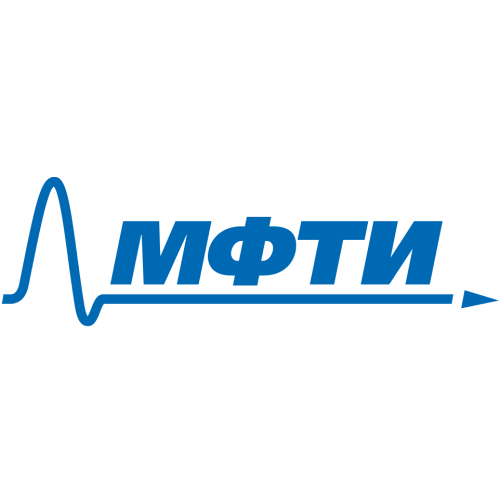Laboratory of Nanostructure Physics at the Moscow State University
Publications
231
Citations
5 767
h-index
35
Authorization required.
Theoretical study of processes in nanostructures consisting of superconducting, normal metal, ferromagnetic and dielectric materials. Design and study of device parameters based on such structures (analog and digital devices, neural networks).
- Theory of Quantum Mechanics/Molecular Mechanics (KM/MM)
Mikhail Kupriyanov
Head of Laboratory
Igor Soloviev
Leading researcher

Michael Khapaev
Senior Researcher

Denis Presnov
Senior Researcher
Sergey Bakurskiy
Senior Researcher
Nikolay Klenov
Associate Professor
Andrey Schegolev
Researcher

Vsevolod Vozhakov
Junior researcher

Aleksey Neilo
Junior researcher
Vsevolod Ruzhickiy
Junior researcher
Research directions
Physical and engineering foundations of non-von Neumann architecture calculators based on superconducting spintronics
+
The interdisciplinary project is aimed at developing methods for manufacturing new elements of superconducting spintronics, as well as tools and principles for designing superconducting integrated circuits of non-von Neumann architecture computers, such as quantum and neuromorphic processors, based on them. The need to introduce spintronics elements into superconducting electronics is dictated by the low degree of integration of traditional superconducting circuits in which information is presented in the form of magnetic flux quanta. In addition to solving the scaling problem, it is expected that the controlled spintronics elements will make it possible to implement energy-efficient circuits with tunable functionality, as well as compact memory elements, including with the function of continuous change of physical parameters. The latter is especially important both for realizing the possibility of tuning the interface circuits of quantum circuits, and for creating synaptic connections in superconducting neural networks. This work lies at the intersection of such disciplines as physics and materials science, programming and mathematical modeling, and the design of electronic devices. The task of fundamental research of new multicomponent spintronics elements based on artificial ferromagnets, followed by the creation of their mathematical models, which can be integrated into the corresponding components of the computer-aided design system and accompanied by parallel development of the element base based on them, is possible only within the framework of an interdisciplinary project at the intersection of physics and engineering sciences.
Post-silicon superconducting electronics based on nanoscale Josephson contacts for large data processing systems
+
Creating systems for processing large amounts of data and artificial intelligence of the next generations requires exploring ways to transition to new materials and design methods. This task, formulated in the NTR of the Russian Federation, is due both to the impossibility of further long-term progress of computing devices on the traditional way of scaling silicon transistors, and new opportunities opening up in solving some classes of problems using devices based on non-von Neumann architecture, such as neuromorphic processors and quantum computers. In these devices, the use of a standard component base often turns out to be suboptimal or impossible. An increase in the productivity and energy efficiency of computing devices can be obtained on the proposed path of using superconducting materials and new physical principles that allow for energy-efficient computing at high speed. The key objective of the project is to solve the main problem of superconducting electronic circuits – a low degree of integration. The novelty of the approach will be the initial focus on designing circuits based on nanoscale Josephson contacts and minimizing the size of the active components of logic devices by creating compact "non-inductive" circuits. The developed component base will be used to create components of logic devices, including devices of new "phase" logic, as well as devices for neuromorphic information processing and interfaces to quantum superconducting circuits. The implementation of this project will provide the basis for the creation of a full-fledged digital post-silicon technology and ensure the preservation of the existing priority of the Russian Federation in this dynamically developing area.
Development of a new element base for digital superconducting electronics with magnetic materials
+
The project is aimed at studying electronic transport in heterostructures containing superconducting (S) materials with various superconducting pairing mechanisms, dielectrics (I), ferromagnets (F) and normal (N) metals. The main goal of the project is to develop the physical foundations of electronic transport in the basic elements of modern superconducting electronics devices – Josephson contacts. Based on the solution of this problem, the possibility of creating new basic elements of superconducting logic and memory based on them, and their corresponding logic of functioning, suitable for circuits operating in classical, adiabatic, reversible, quantum mode and artificial neural network mode, will be investigated. The practical significance of the project consists in obtaining the data necessary for the development and construction of modern devices for receiving and processing information, which differ from their semiconductor counterparts in their unique sensitivity and (or) performance, as well as in creating a new family of superconducting element base components built using the studied Josephson heterostructures with ferromagnetic layers. The parameters of the Josephson elements being developed will be determined, ensuring the correct conduct of logical operations, operations of writing and reading information. Studies of dynamic processes in the developed basic elements and multi-element Josephson structures will be carried out.
Publications and patents
Found
Nothing found, try to update filter.
Андрей Евгеньевич Щеголев, Игорь Игоревич Соловьев, Николай Викторович Кленов, Сергей Викторович Бакурский, Виталий Владимирович Больгинов, Максим Валерьевич Терешонок, Михаил Юрьевич Куприянов
RU2734581C1,
2020
Михаил Юрьевич Куприянов, Сергей Викторович Бакурский, Николай Викторович Кленов, Игорь Игоревич Соловьев
RU2620027C1,
2017
Михаил Юрьевич Куприянов, Сергей Викторович Бакурский, Николай Викторович Кленов, Игорь Игоревич Соловьев
RU2601775C2,
2016
Игорь Игоревич Соловьев, Михаил Юрьевич Куприянов, Олег Васильевич Снигирев, Николай Викторович Кленов
RU2592735C1,
2016
Михаил Юрьевич Куприянов, Сергей Викторович Бакурский, Николай Викторович Кленов, Игорь Игоревич Соловьев, Александр Львович Гудков, Валерий Владимирович Рязанов
RU2554612C2,
2014
Михаил Юрьевич Куприянов, Сергей Викторович Бакурский, Николай Викторович Кленов, Игорь Игоревич Соловьев
RU2554614C2,
2015
Татьяна Юрьевна Карминская, Михаил Юрьевич Куприянов, Рафаэль Гарунович Деминов, Ленар Рафгатович, Яков Викторович Фоминов
RU2442245C1,
2012
Татьяна Юрьевна Карминская, Михаил Юрьевич Куприянов, Валерий Владимирович Рязанов
RU2439749C1,
2012
Игорь Альфатович Девятов, Михаил Юрьевич Куприянов
RU2437189C1,
2011
Татьяна Юрьевна Карминская, Михаил Юрьевич Куприянов, Валерий Владимирович Рязанов
RU2373610C1,
2009
Татьяна Юрьевна Карминская, Михаил Юрьевич Куприянов, Валерий Владимирович Рязанов
RU2343591C1,
2009
Иван Александрович Волков, Михаил Юрьевич Куприянов, Олег Васильевич Снигирев
RU2325005C1,
2008
Багомед Магомедович Алаудинов, Эрнст Константинович Ковьев, Михаил Юрьевич Куприянов, Сергей Николаевич Поляков
RU2107358C1,
1998
Анатолий Михайлович Балбашов, Игорь Иванович Венгрус, Олег Васильевич Снигирев, Эрнст Константинович Ковьев, Михаил Юрьевич Куприянов, Сергей Николаевич Поляков, Игорь Юрьевич Парсегов
RU2105390C1,
1998
Александр Львович Гудков, Михаил Юрьевич Куприянов, Анатолий Иванович Козлов, Анатолий Николаевич Самусь
RU2504049C2,
2020
—
2023
| Соловьев Игорь Игоревич
2020
—
2022
| Куприянов Михаил Юрьевич
2017
—
2019
| Куприянов Михаил Юрьевич
Lab address
Москва, микрорайон Ленинские Горы, 1с6, корпус "Модуль"
Authorization required.










